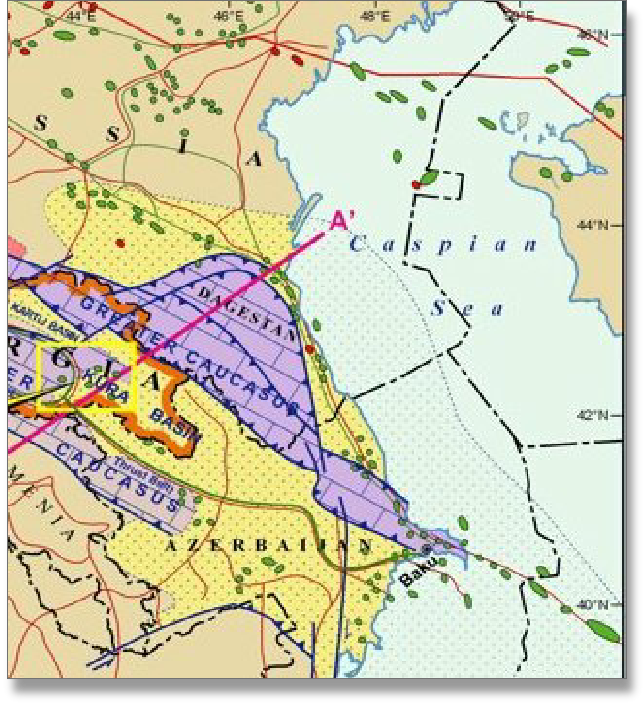
Some of the numbers presented in this website may not be the most recent available
Globalshift.co.uk - copyright © 2009 to 2025; All rights reserved


Brief history of the country
Azerbaijan (the Republic of Azerbaijan) in the Transcaucasus borders the Caspian Sea (east), Russia and Georgia (north), Armenia (west) and Iran (south). The exclave of Nakhichevan also borders Turkey.
Populated for thousands of years the area was ruled by Iranian and Armenian Empires from 1000 BC with Albanians establishing a kingdom in the north. Arabs took over in 640 AD but Albania retained its monarchy until 1067 when the territory was taken by Seljuq Turks.
The Timurid Empire then ruled from 1370 to 1507 while self-ruling Khanates also emerged. Ottomans and Russians occupied for periods but the region generally remained Iranian until falling to the Russian Empire from 1813.
After the Russian Revolution the short-lived Transcaucasus Republic was replaced by the Azerbaijan Democratic Republic in 1918 until the Soviets invaded in 1920, establishing the Azerbaijan Soviet Socialist Republic. The Nakhichevan SSR was included after an agreement with Turkey. Baku provided most Soviet oil during World War 2.
Azerbaijan gained independence in 1991 prior to the collapse of the USSR. Armenians living in Nagorno-Karabakh seceded in 1994 but this area was dissolved in January 2024 after a war and blockade when most Armenians left.
Despite several failed coups Azerbaijan has remained stable since independence with an economy supported by its offshore oil and gas resources.
Oil and gas summary
Azerbaijan, in the South Caucasus region, straddles Asia and Europe. Its geography is dominated by the Caspian Sea on the east, the Greater and Lesser Caucasus mountain ranges on the north and south and flat terrain between the two.
The highest peak is Mount Bazardüzü in the Greater Caucasus at 4,466m. Another mountain range, the Talysh, lies in the southeast and around half of all the mud volcanoes in the world are also located in Azerbaijan.
Azerbaijan is an old producing country with oil output beginning in 1871 from the onshore area adjacent to the South Caspian Sea. People also noticed rocks offshore close to the Absheron Peninsula covered by a film of oil, naming it Black Rocks.
Activity extended into the sea in 1925 with the use of artificial islands and an extensive infrastructure of piers and pipes. After WW2 the geology of the area was studied by the Azerbaijan Academy of Sciences and in 1949 the Neft Dashlari (Oil Rocks) field was discovered 100 kms from the coast. It was then the world’s largest offshore oil field and the foundation for offshore production and drilling around the world. Onshore oil now forms a small and dwindling part of Azerbaijani production.
Offshore oil output has now peaked from a number of fields developed by foreign companies. The most significant are the Azeri-Chirag-Gunashli (ACG) oil project and the Shah Deniz gas/condensate field.
Gas production began to increase in 2007 and Globalshift expects it will continue to rise rapidly as offshore fields are developed. The bulk of the oil is produced for export through the 1,768 km Baku–Tbilisi–Ceyhan (BTC) oil pipeline through Georgia and Turkey. The country also became a net gas exporter in 2007 through a parallel pipeline.

AZERBAIJAN
Map and National Flag


CENTRAL ASIA
Market trader
Central Asia




Capital
Population
Land area (sq kms)
Oil prod (000s b/d)
Gas prod (bcm/yr)
Oil cons (000s b/d)
Gas cons (bcm/yr)
Baku
8.8 mm
86,600
716
26
92
12
Government
Azerbaijan is a semi-presidential republic with the President, elected for a 5-year term, as head of state and the Prime Minister as head of government.
The president is authorized to form the Cabinet, headed by the Prime Minister which is accountable to the President and the National Assembly.
Legislative power is held by the elected unicameral 125-seat National Assembly. The Supreme National Assembly runs the Nakhchivan Autonomous Republic.
The Ministry of Energy, established in 2001, is in charge of regulating activities in the oil and gas industry.
The State Oil Company of Azerbaijan Republic (SOCAR), established in 1992, is the NOC. It produces oil and gas and operates the country's refineries, a gas processing plant and export pipelines.

AZERBAIJAN: TECTONIC ELEMENTS
Globalshift.co.uk (source: ENVOI)